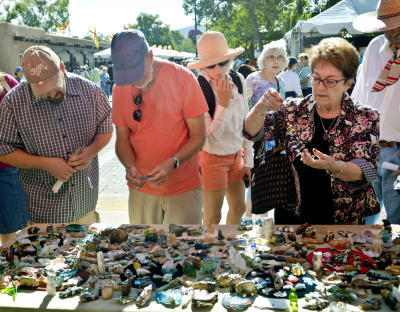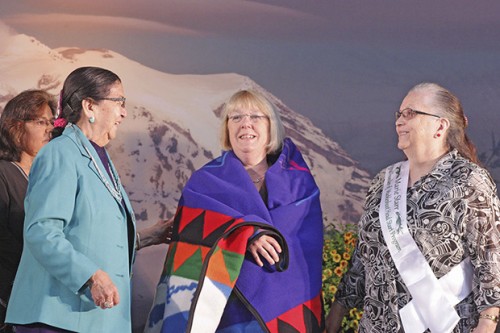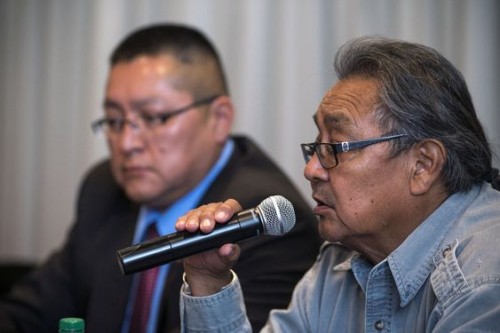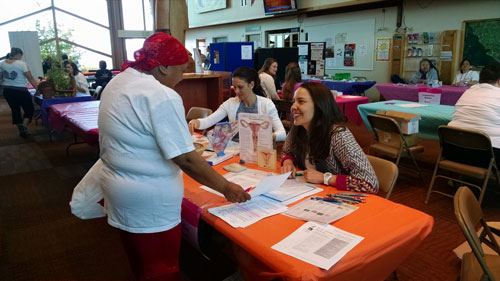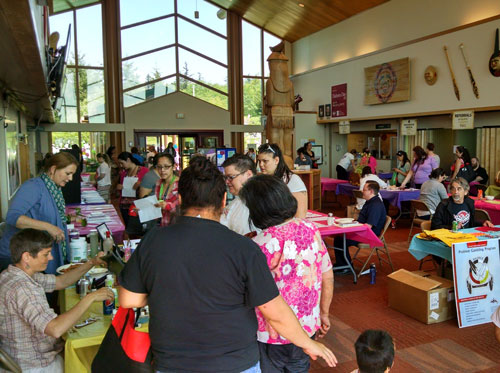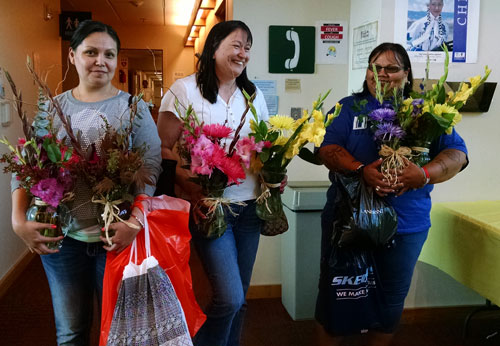By Chetanya Robinson, The Daily
If you had wandered into the UW wǝɫǝbʔaltxʷ – Intellectual House on Saturday, you would have gotten a taste, quite literally, of ancient tradition. Seal oil, berries, Douglas fir tea, and numerous other plant and animal foods that have nourished traditional Native cultures for millennia were on offer to taste.
The occasion was the third annual summit around indigenous foods held by the UW American Indian Studies department. Panelists invited from across Native North America shared stories, teachings, and insights from their cultures and professional lives.
Michelle Daigle, a coordinator of the summit and Ph.D. candidate in geography at the UW, touched on the sacred place that food holds in indigenous cultures, and how traditional food practices have been threatened historically by logging, mining, the fur trade, and most recently, resource extraction.
Lawrence Curley, a UW master’s student who studies water quality, talked about how in traditional cultures, there is no concept of natural resources; it’s more accurate to talk about natural relationships.
“In our languages, we don’t have a word for resource, or rather, that word is given to relations,” Curley said. If people were to treat natural resources as if they were relatives, it would be a relationship based on love.
Valerie Segrest, Muckleshoot tribal member who works with the Muckleshoot Food Sovereignty Project, drew a connection between food sovereignty and the health problems facing modern society and Native Americans in particular. She said that though food sovereignty is something of a trendy concept, and one that can mean any number of things, the basic ideas are ancient.
“When I look back at our treaties and how they were negotiated here and how my ancestors thought was top priority, it was about access to food, having access to all of the elk, the deer, the salmon, the shellfish, the berries, the roots, medicines and the cedar tree,” Segrest said. “Because we know that when these things cease to exist, then so do we as a people. When we eat our foods, we maintain our identity.”
Hokulani Aikau, professor at the University of Hawai‘i, touched on the inseparable relationship between indigenous self-determination and food in Hawaii, which, in turn, is connected to water quality necessary to support traditional plants.
Aikau brought up taro (kalo in Hawaiian), which in Hawaiian culture is considered the child of the creator of the stars. With rising temperatures, less rainfall and poorer water quality, taro can’t be grown the same way it was.
“We have to restore the water in order to restore our food in order to restore our people,” Aikau said.
Jonathan Betz-Zall, an attendee, said he has heard from many Native Americans about the issues presented at the panel through his work with the American Friends Services Committee, a Quaker organization. He came to the summit to hear more about the issues and sample great food.
“The natives in our area especially have been pioneers, really, in showing people a way to live in harmony with the land that enables you to keep on going through time,” he said.
In the back of the room, attendees could not only learn about indigenous foods, but taste them too, starting with cold Douglas fir tea to drink. One table featured samples of sea life — Northwest fish and shellfish, sea cucumber and seal oil — while on another sat bowls of traditional plants like bitterroot, chokeberry, huckleberry, nettles and sea beans.
Spokane tribal member and traditional foods educator Elizabeth Campbell managed an informational table that displayed examples of Native Northwest foods, many of which she had helped gather. Among them were camas bulbs her grandmother had roasted more than 50 years ago.
Campbell, who teaches at Northwest Indian College, grew up harvesting traditional Native plants, and has extensive knowledge about the nutritional, culinary, and traditional practices surrounding them. For the summit, Campbell had prepared a foam made of bitter soapberries, as well as a chocolate pudding thickened with two local seaweeds.
“One of the things that we talk about a lot is how you don’t need a lot of our traditional foods to build our strength and our spirit,” Campbell said. “They’re pretty nutrient-dense, and so even just getting a small amount of these foods in us can really feed not only our bodies but our spirits as well.”
A lunch of elk and salmon — more indigenous foods — was provided to attendees, many of whom took in the afternoon sun outside while sitting on the wooden benches of the Intellectual House.




